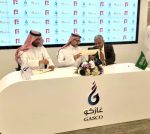FAQs
Frequently Asked Questions and Answers
There are many differences between steel and composite LPG cylinders. The main variances are that composite cylinders are lightweight, non-explosive, translucent, non-corrosive and environmentally friendly, characteristics lacking from traditional steel cylinders. Moreover, composite cylinders have a longer lifecycle compared to traditional steel cylinders.
In our Product section you will be able to browse the features of our composite LPG cylinders. You can download a comparison between metal composites and steel cylinders by clicking here.
No, the filing stations can be adapted to existing facilities and equipment.
No, you can only send one type of cylinder per container.
Our cylinders are shipped directly from the factory in India and usually our cylinders are dispatched between eight and nine weeks after receiving a deposit. Shipping time is dependant upon the destination country. Please contact us for more details.
You can choose different colours for the same size of cylinder or assign different colours to different sized cylinders. However, the only requirement is that it must be one colour per container, so the number of colours you can choose, depends upon the number of cylinders you purchase.
Yes, 100%.
As a composite, the impact is very low.
To request a quotation we will need the following information:
• Company details
• Size of the cylinders required
• Quantity required
• Valve technical drawing
• Destination port where the cylinders are to be delivered.
Cylinders have been developed over time and their heritage can be noticed over the various generations.
Generation I cylinders were introduced in the nineteenth century, between 1870-1880, to store liquid carbon dioxide for industrial gas businesses. Generally they are long steel tubes without handles and are logistically difficult to handle.
Generation II cylinders are also made from steel. Handles have been added and the shape has been refined, cylinders are now shorter but wider. This generation of cylinder is the most popular and are known as the “traditional” cylinder.
Third generation III cylinders are improved upon type II, using plastic for the exterior coating that can be customised, but the interior remains metal. However, these cylinders continue to have the same drawbacks as Generation I and II.
Generation IV cylinders are the latest on the market. They were developed with aerospace technology and represent a real advancement, that otherwise has effectively remained unchanged over 75 years. They have unique characteristics including being lightweight, non-explosive, translucent, non-corrosive and environmental friendly. Moreover, Generation IV cylinders have a longer lifecycle when compared to traditional steel cylinders.
For further information please visit our product section.




